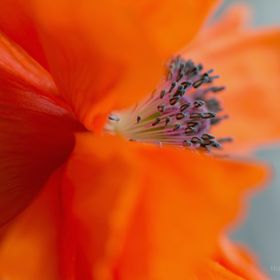

BarbaraStorms
FollowThese Cicadas emerge after 17 years underground by the millions, mate, and die in the span of about 6 weeks. Their eggs hatch and new cicada nymphs dig back und...
Read more
These Cicadas emerge after 17 years underground by the millions, mate, and die in the span of about 6 weeks. Their eggs hatch and new cicada nymphs dig back underneath the earth, and the cycle continues for another 17 years.
Read less
Read less
Views
1175
Likes
Awards
Featured
Featured
Contest Finalist in The Red Color In Nature Photo Contest
Peer Award
Superb Composition
Absolute Masterpiece
Top Choice
Superior Skill
Outstanding Creativity
Magnificent Capture
All Star
Genius
Top Ranks
Same photographer See allBehind The Lens
Behind The Lens
Location
This photo of a 17 Year Brood II Cicada was taken at Willowwood Arboretum in Far Hills, NJ, USA. These Cicadas emerge after 17 years underground by the millions to mate for a span of about 6 weeks. As their life cycle ends, their newly laid eggs hatch and the cicada nymphs dig back underneath the ground for another 17 years. Willowwood, with it's grassy fields and undisturbed habitats, was the perfect spot to capture these interesting insects.Time
I saw this cicada on a blade of field grass in the early morning on a partially cloudy day. The morning light was soft, thus perfect for macro photography. The air temperature was also still cool which is optimum when shooting these particular cicadas. As the air temperature rises during the day they will get more active, and more active means flying into your head and getting tangled in your hair!Lighting
When I shoot macro photography, particularly insects, I always use natural light and shoot in the early morning or late afternoon hours. If it's mid day, the sunlight will usually be too harsh thus over exposing a photo. The soft light also yields better color and definition in the final image.Equipment
For this shot I used a NIKON D3100, Tokina 100mm f/2.8 AT-X Pro D Macro lens, and a very basic monopod. No flash, as I only use natural light for my macro photography.Inspiration
To me personally, the only inspiration I needed was the fact that these insects are only above ground once every 17 years where I live. I literally followed 17 Year Brood II Cicada tracker sites online for the emergence in my state, and would go to Willowwood every few days when they were due not only to attempt to photograph them, but also to experience the event. What began as a few hundred cicadas swelled into thousands upon thousands within a few weeks. Then hundreds of thousands. I will never forget it, and I was sad to see them go. But on the same hand grateful I was able to be there and capture a moment in their lives.Editing
The only post processing I did was a very small bit of sharpening on the bugs mouth area, and very minor saturation adjustments on the overall photo.In my camera bag
Currently I carry one camera in my bag, a Nikon D7100. Along with this camera I'm usually toting around my Tokina 100mm f/2.8 AT-X Pro D Macro lens, one telephoto lens which is a AF Zoom-NIKKOR 70-300mm f/4-5.6G, and a standard AF-S Nikkor 18-140mm lens. I like to use a mono pod as well and have a least one Pearlstone Lens Cleaning Cloth with Grip tucked in there somewhere between my fruit snacks, granola bars and bottled water.Feedback
Your macro insect photos will be more rewarding when you respect, appreciate, and work with these wonderful subjects. Try to be patient and don't give up when they crawl or fly away, as they usually come back. Be part of the environment, not an intruder in it, and they won't even notice you after awhile. If you want to be able to keep moving quickly around the insect, use a monopod and balance it on your arm or against your body to reduce camera shake. And finally, before you shoot, adjust your camera settings and take a few practice shots to get the exposure correct. Then fire away!



























